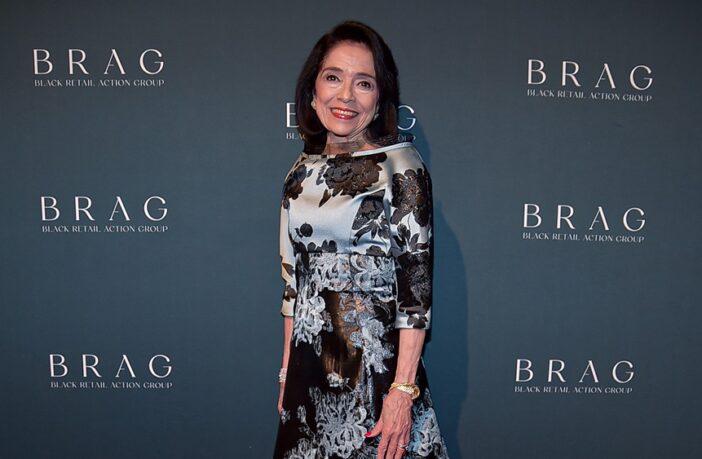What has driven Dr. Joyce F. Brown to serve as president of the Fashion Institute of Technology, affectionately known as FIT, since 1998? As its sixth president, she’s overseen the New York City-based school’s transformation from its vocational school beginnings into a vibrant educational hub shaping the next leaders in fashion, design and technology. With the announcement that she is stepping down at the end of the 2024–2025 academic school year, concluding nearly 26 years of transformative service to the institution, she revealed to EBONY that compelling stories have always been her passion.
“What I saw was a wonderful story that could be told,” she stated. “This is a rich resource for New York City with its location, intersection and appeal to advertising, marketing, textile development, fashion design and interior design. There was just so much here that wasn’t being celebrated sufficiently. That was the big appeal to me,” she said.
Her success has been resounding. On October 10, Dr. Brown was honored by BRAG, The Black Retail Action Group, for her commitment to educating the next generation of industry leaders. “BRAG is such a wonderful institution…the women are inspirational, so it was a privilege. I was honored to be recognized by them.”
Brown’s expertise in higher education traces back to her days at the City University of New York, where she “did every job there was to do.” After a stint as its vice chancellor and serving as acting president at Baruch College, she received the offer from FIT. “I came with a long record of accomplishment in the field that would have been hard to overlook, and I certainly feel that we all have that obligation when we get in these positions,” she said.
One of the keys to her success has been communication by prioritizing connections with people inside the school walls. “You can be the visionary, but what you really are as a facilitator and an enabler. As I envisioned the direction I thought we needed to go, I also knew that I needed to create a dialogue within this community so that the people who needed to carry out whatever that mission was going to be felt a sense of ownership and identification with it.”
That dialogue included a strategic planning process where the FIT community had a say. “It was faculty, students, administrators, trustees and some corporate partners, and the conversation was about who we wanted to be?” The plan has been revisited in five-year bites, establishing FIT in its most current incarnation, which leans into technology with a new DTech lab and other cutting-edge initiatives.
It’s the perfect note to end an era. “During my tenure at FIT, we have developed strategic goals and initiatives to infuse innovation and technology into our curriculum and programs,” she shared. “This has allowed FIT to serve as a creative hub and a pipeline for talent. Watching our students achieve success in national and international competitions and seeing the industry success of our alumni—is a true point of pride.”
With an impressive history to leave behind, Dr. Brown offered these thoughts for Dr. Melissa L. Gilliam, Boston University’s new president, who started in her presidential post in July.
“If I were to attempt to give somebody of her stature advice…it’s the opportunity to use your early days to establish trust within the community, that you’re interested, willing and will take to heart and act on what the concerns are: what the suggestions are and what the ideas are of the faculty, students and staff. Your faculty are your partners in moving things, getting those breakthrough programmatic things you need and having everyone rowing in the same direction.”
Listening and transparency are also key, she shared. “Having listened well and established trust with the various concentric circles of people in the community, you can establish a strategic goal that is mission-driven and a direction that benefits everybody in the community and raises the profile of the college. Everyone benefits.”
For both leaders, Dr. Brown believes that being Black and female gives them a diverse perspective that is sometimes lacking from others. “I think we come with a different kind of sensitivity and awareness of the aspects of leadership and daily interactions that are overlooked in many instances or not considered or not weighed with the same kind of gravitas as other things. We bring a different kind of sensitivity, awareness and inclusiveness, and a willingness to take a stand on those things.”
As for young women who want to follow in these leader’s footsteps, “I think you have to work in the environment. There are many levels that you need to understand and be exposed to,” she said. “You may wear many hats as you ascend the educational ladder, exposing you to many inner workings at the institution and decision-makers who will guide your career. But, I think it’s really important to enjoy the work,” she declared.
“You know what did they say? The only place success comes before work is the dictionary. You’ve got to know how it all fits together. And you can’t pretend that. You can’t pretend on any level about any of it.”



